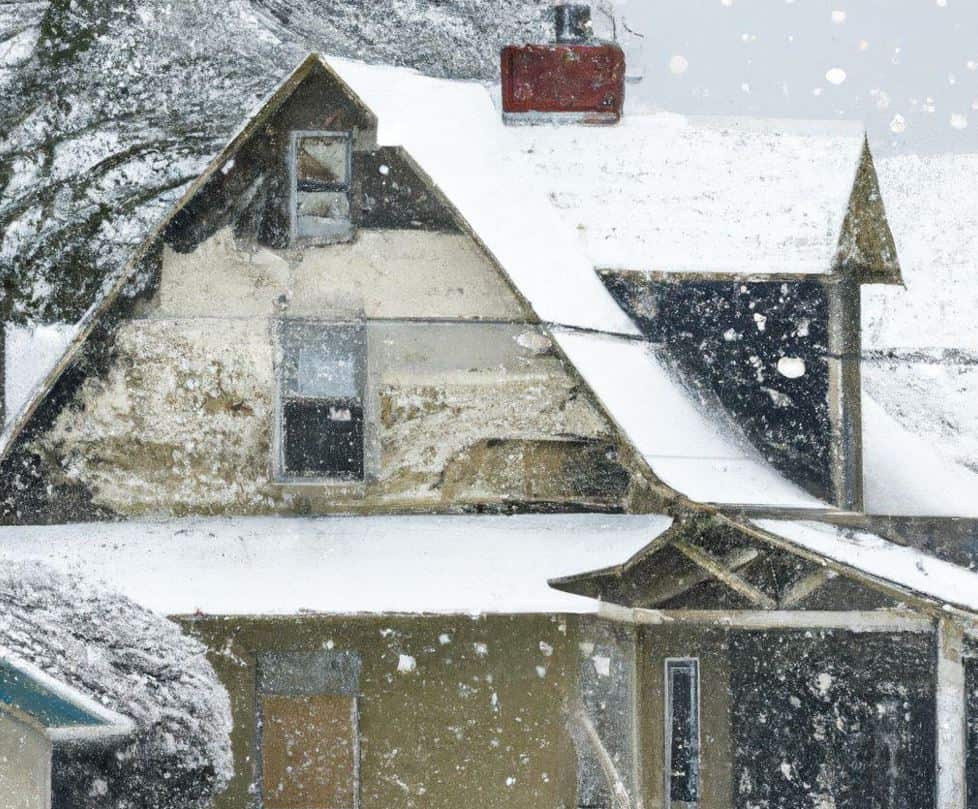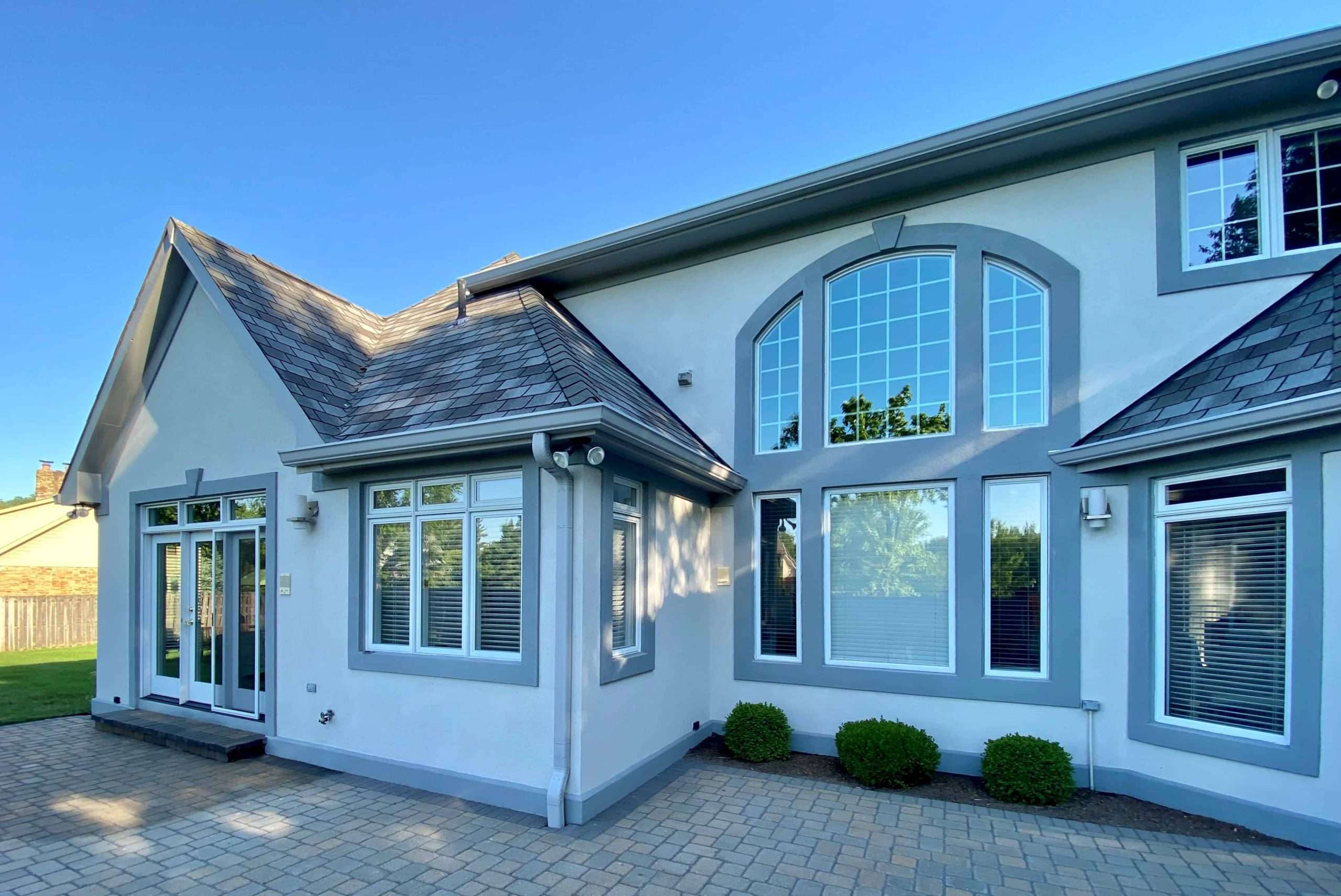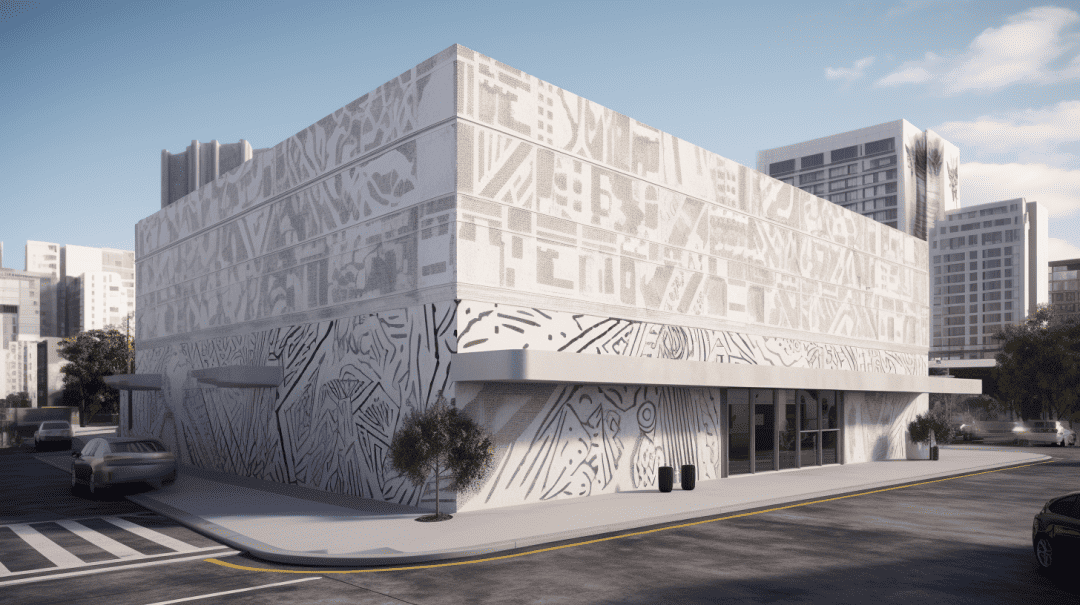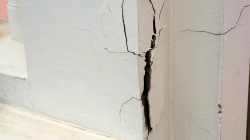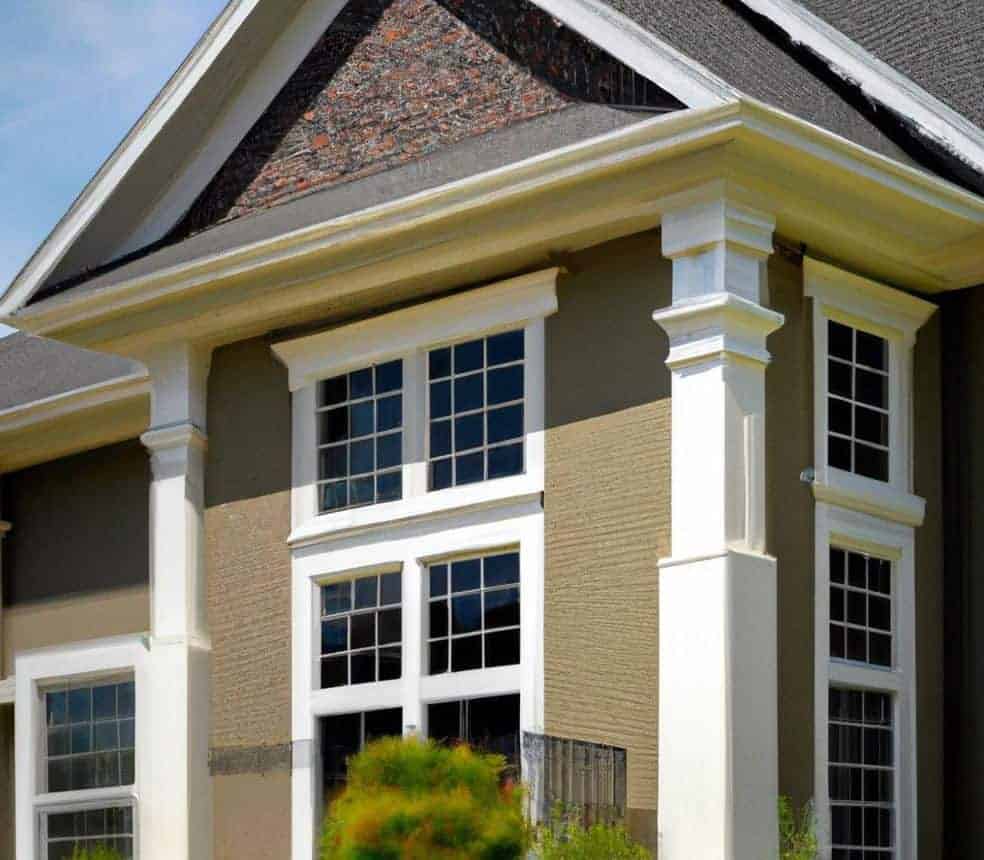Unlock the Secrets to Preserving Your EIFS Stucco’s Beauty and Durability with Expert Moisture Management Tips
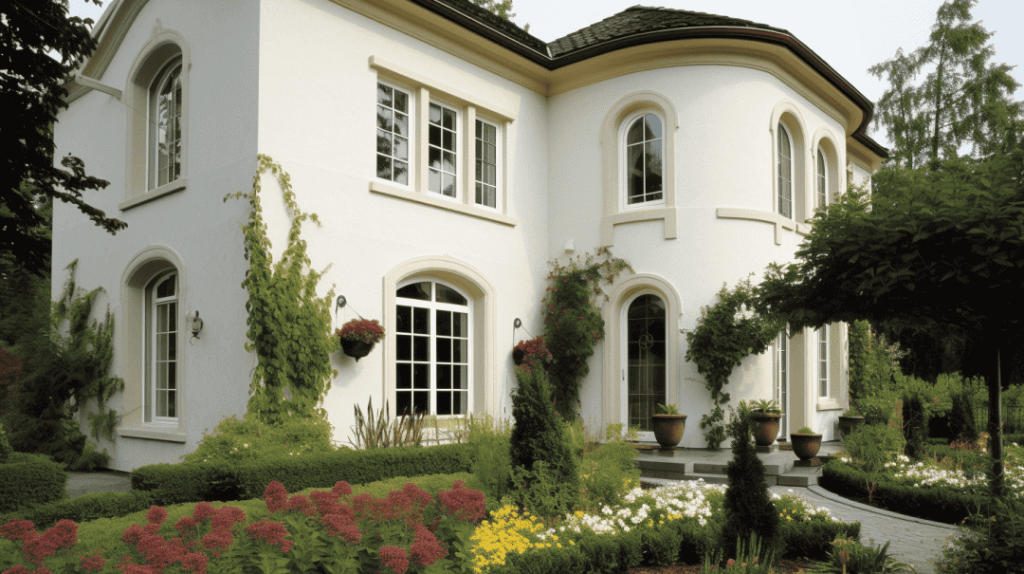
Key Takeaways:
- Proper moisture management is crucial for the maintenance of EIFS stucco systems. With the evolution of stucco systems and the impact of energy-efficient buildings, it is essential to prevent water infiltration to avoid costly damages and ensure longevity.
- Design considerations play a significant role in preventing moisture infiltration. Understanding different stucco-like assemblies and systems, including water resistant barriers in EIFS and stucco, is important for effective moisture management. Merging EIFS finish coats with traditional stucco systems requires careful attention to foam plant-on shapes, acrylic/elastomeric finish coats, and aluminum reveals.
- Implementing proper moisture management techniques is essential. This includes incorporating drainage points in stucco accessories, installing flashing to prevent water infiltration, and ensuring proper termination points for stucco systems. These techniques help redirect moisture away from the stucco cladding, preventing damage and maintaining performance.
- Enhancing the performance of cement stucco as a cladding involves continuous research and development of stucco accessories. Modified and improved stucco accessories are designed to effectively divert water and enhance moisture management. Proper moisture management not only ensures long-term stucco performance but also minimizes the risk of structural issues and associated costs.
Introduction
Proper moisture management is crucial for the maintenance of EIFS stucco systems. As buildings have evolved over time, so have stucco systems, highlighting the need for effective moisture control methods. With the rise of energy-efficient buildings, the potential for moisture infiltration has also increased, posing new challenges for stucco maintenance. In this section, we will explore the impact of energy-efficient buildings on moisture infiltration and the importance of good design and planning in preventing water infiltration. Understanding these factors is essential for prolonging the lifespan of EIFS stucco and ensuring its durability.
Evolution of stucco systems and the need for proper moisture management
Throughout the journey of stucco systems, an essential factor has emerged: the significance of proper moisture management. As stucco systems have evolved, the need to effectively address moisture infiltration has become increasingly evident. This evolution is driven by the impact of energy-efficient buildings, which can inadvertently lead to increased moisture infiltration. To prevent water infiltration and its damaging effects, good design and planning are crucial. By considering various aspects such as water-resistant barriers, merging EIFS finish coats with traditional stucco systems, and incorporating proper drainage points, flashing, and termination points, stucco systems can be better equipped to handle moisture challenges. Additionally, research and development efforts have led to modified and improved stucco accessories that enhance the performance of cement stucco as a cladding material. Through these advancements in moisture management techniques, the long-term effectiveness of stucco systems can be ensured.
In summary, the evolution of stucco systems highlights the need for effective moisture management. With the changing landscape of energy-efficient buildings and advancements in construction materials and techniques, addressing water infiltration has become a crucial aspect of designing and maintaining stucco systems. Various considerations such as incorporating water-resistant barriers, merging different types of finishes like EIFS and traditional stucco, installing proper drainage points, flashing, termination points, and utilizing modified accessories contribute to enhancing the performance of cement stucco as a cladding material. By prioritizing proper moisture management techniques throughout the evolution of stucco systems, risk factors associated with water infiltration can be mitigated effectively.
Furthermore, take for instance a case where a building was constructed using outdated stucco techniques that lacked proper moisture management measures. As time passed, the lack of effective drainage points, flashing, and termination points became apparent. The building experienced severe water infiltration issues, resulting in extensive damage to its structure. In response, a thorough assessment was conducted, and updated moisture management techniques were implemented. This included installing new drainage points, flashing, and termination points, along with utilizing improved stucco accessories. The effectiveness of these measures was evident as the building showcased enhanced resistance against water infiltration and demonstrated better long-term stucco performance.
Energy-efficient buildings may keep you warm, but they’re also experts at inviting sneaky moisture infiltration to crash the party.
Impact of energy-efficient buildings on moisture infiltration
Energy-efficient buildings have a significant impact on moisture infiltration. With the growing importance of sustainable construction practices, these buildings are designed to reduce energy consumption. However, this can inadvertently lead to increased moisture infiltration if not properly managed.
Moisture infiltration is a critical concern as it can compromise the structural integrity of the building and lead to various issues such as mold growth and deterioration of materials. The improved insulation and air sealing in energy-efficient buildings create a tighter envelope, reducing the natural ventilation and making it more challenging for moisture to escape.
To address this, proper moisture management techniques should be implemented during the design and construction phase. This includes incorporating water-resistant barriers in stucco systems, ensuring proper installation of flashing to prevent water infiltration, and strategically placing drainage points in stucco accessories.
Additionally, research and development of stucco accessories have led to modified and improved products that effectively divert water away from the building envelope. These advancements enhance the performance of cement stucco as a cladding material in energy-efficient buildings.
Good design and planning are the best defense against water infiltration, because nobody likes a soggy stucco surprise.
Importance of good design and planning in preventing water infiltration
Good design and planning play a crucial role in preventing water infiltration, ensuring the longevity of stucco systems. By strategically considering factors such as drainage points, flashing installation, and termination points, water can be effectively diverted away from the stucco cladding. This prevents unwanted moisture infiltration, which can lead to structural damage and costly repairs. Proper moisture management techniques enhance the performance of cement stucco as a cladding material, further emphasizing the importance of good design and planning in preventing water infiltration.
Creating a waterproof barrier with stucco systems is like putting a raincoat on your building – but without the stylish hood.
Design Function Considerations for Stucco Systems
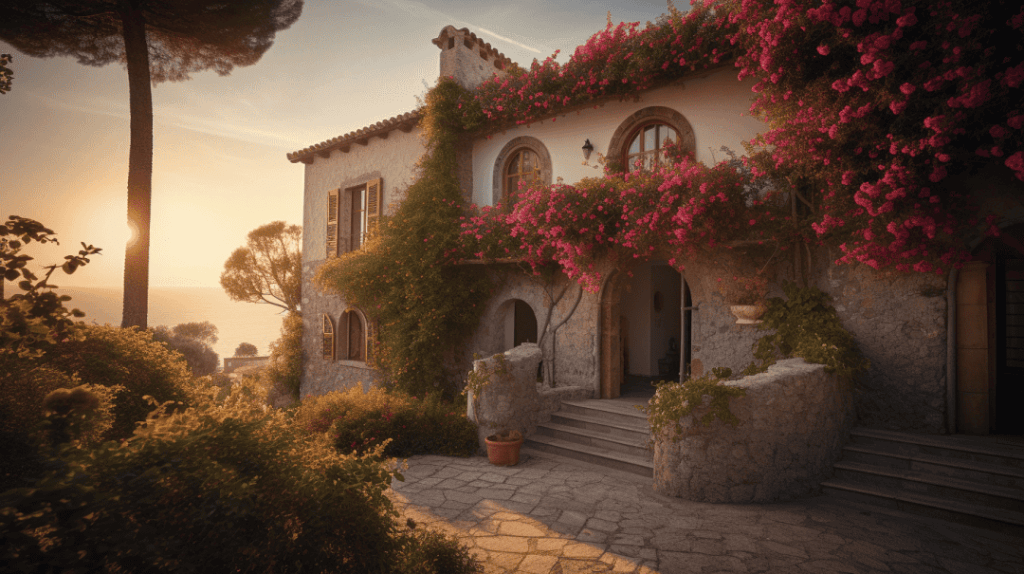
When it comes to stucco systems, there are several design function considerations to keep in mind. Understanding these considerations is crucial for proper moisture management and long-term maintenance of EIFS stucco. In this section, we will explore a variety of stucco-like assemblies and systems, each with its own unique characteristics and uses. We will also delve into the importance of water-resistant barriers in EIFS and stucco systems, highlighting their role in preventing moisture infiltration. Additionally, we will discuss the considerations that must be taken into account when merging EIFS finish coats with traditional stucco systems. By delving into these topics, we will gain valuable insights into effective design strategies for stucco systems.
Overview of different stucco-like assemblies and systems
Stucco systems have evolved over time, leading to the need for proper moisture management. Energy-efficient buildings have also impacted moisture infiltration, emphasizing the importance of good design and planning in preventing water infiltration. To provide an overview of different stucco-like assemblies and systems we will highlight the various components and characteristics of these systems:| Stucco Assembly/Systems | Characteristics |
|---|---|
| Traditional Stucco | Cement-based |
| EIFS (Exterior Insulation and Finish System) | Insulating foam board with base coat and finish coat |
| One-Coat Stucco | Single layer application with added polymers |
| Acrylic Stucco | Polymer-based finish coat |
Expanding on this topic, it is crucial to note that each stucco assembly/system has unique features and requirements that must be considered during design and installation. It is important to select the appropriate water-resistant barriers, such as those utilized in EIFS systems. Additionally, merging EIFS finish coats with traditional stucco systems may involve the use of foam plant-on shapes, acrylic/elastomeric finish coats, or aluminum reveals. As for unique details not covered previously, it can be mentioned that proper moisture management techniques should include drainage points in stucco accessories to effectively divert water away from the system. Flashing installation plays a significant role in preventing water infiltration, while termination points should also be carefully addressed. In exploring the history related to this heading, it is worth noting that research and development efforts have continuously improved stucco accessories to enhance cement stucco’s performance as cladding. Modified accessories designed for effective water diversion have further contributed to the long-term performance of stucco systems. Keeping water out is like keeping a cat entertained with a laser pointer – you need the right barriers in place to prevent infiltration in EIFS and stucco systems.
Water resistant barriers in EIFS and stucco systems
Water resistant barriers play a crucial role in the effective management of moisture in EIFS and stucco systems, ensuring their durability and performance. Here are five key points to understand about water resistant barriers in EIFS and stucco systems:
- – EIFS systems require the installation of water resistant barriers to prevent water infiltration into the building envelope. These barriers act as a protective layer, preventing moisture from seeping through the exterior cladding and causing potential damage.
- – Stucco systems also benefit from the inclusion of water resistant barriers. These barriers create a barrier against water penetration, reducing the risk of moisture-related issues such as mold growth or structural damage.
- – The selection of appropriate water resistant barriers is crucial for both EIFS and stucco systems. Factors such as material compatibility, weather resistance, and vapour permeability should be considered when choosing these barriers to ensure optimal performance.
- – Proper installation techniques are essential for maximizing the effectiveness of water resistant barriers. This includes proper sealing at joints and penetrations, ensuring a continuous barrier that minimizes the chances of water ingress.
- – Regular maintenance is necessary to ensure ongoing functionality of water resistant barriers. Periodic inspections should be conducted to identify any signs of damage or deterioration, allowing for timely repairs or replacements if needed.
It is important to invest in high-quality water resistant barriers that are compatible with EIFS and stucco systems. By ensuring proper selection, installation, and maintenance practices, building owners can enhance the longevity and performance of their cladding systems while minimizing potential moisture-related issues. Merging EIFS finish coats with traditional stucco systems – because mixing foam, acrylic, and aluminum can make a building look like it’s having an identity crisis.
Considerations when merging EIFS finish coats with traditional stucco systems
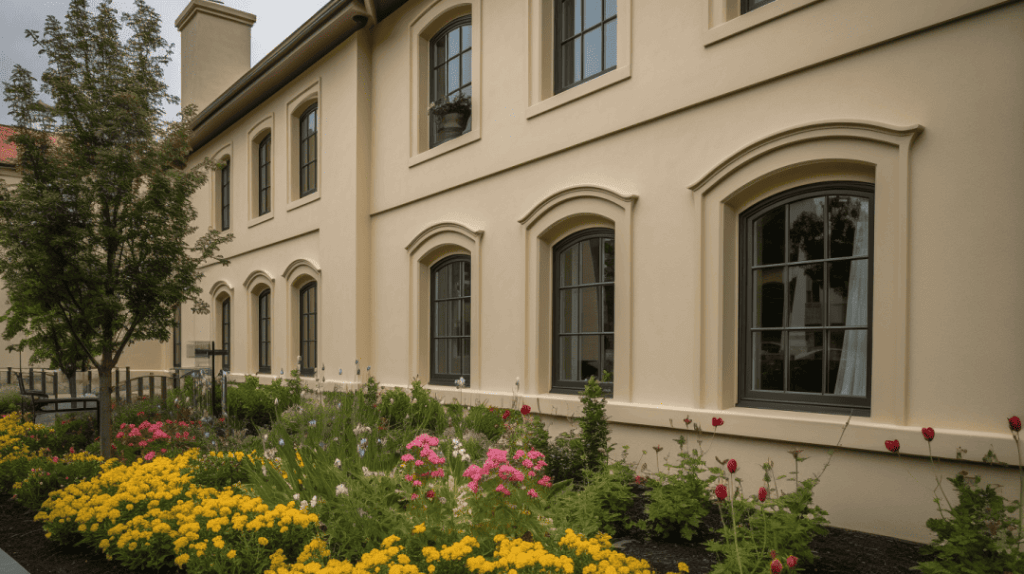
When merging EIFS finish coats with traditional stucco systems, there are important factors to consider. These include the use of foam (EPS) plant-on shapes, acrylic/elastomeric finish coats, and aluminum reveals. These elements play a crucial role in creating a seamless integration between EIFS and traditional stucco systems.
Proper moisture management is essential in ensuring the longevity and performance of the merged EIFS and stucco system. This includes incorporating drainage points in stucco accessories to prevent water infiltration, installing flashing to redirect water away from vulnerable areas, and carefully planning termination points for the system.
In addition to these considerations, it is vital to utilize modified and improved stucco accessories that effectively divert water. Research and development of new stucco accessories have led to enhanced performance and better moisture management techniques. By incorporating these advancements into the merged system, the overall cladding can be significantly enhanced.
To ensure long-term success and maintain optimal performance, it is critical to implement proper moisture management techniques for EIFS-stucco maintenance. Failure to do so may result in water infiltration, damage to the cladding system, and costly repairs or replacements. By proactively addressing moisture management during the merging process, potential issues can be avoided, leading to a more durable and reliable cladding solution.
Don’t miss out on the opportunity to create a seamless merge between EIFS finish coats and traditional stucco systems while ensuring proper moisture management. By considering all necessary factors and utilizing advanced stucco accessories, you can achieve a high-performance cladding system that not only looks great but also protects your building from moisture-related problems in the long term.
Float like a butterfly, sting like an EPS foam plant-on shape.
Foam plant-on shapes
Foam (EPS) plant-on shapes provide versatility and creativity in stucco system design. They can be easily shaped and molded into various architectural elements such as cornices, columns, and trim details.
These foam shapes act as an additional layer of insulation for the building. They help improve energy efficiency by reducing heat transfer through walls.
Foam (EPS) plant-on shapes are lightweight yet durable, making them suitable for exterior applications. They offer resistance to moisture infiltration and contribute to the long-term performance of stucco systems.
The integration of foam (EPS) plant-on shapes with other components of the stucco system requires careful planning and expertise. Proper installation techniques and compatibility with other materials ensure a seamless and visually appealing finish.
Foam plant-on shapes play a significant role in enhancing both the aesthetics and functionality of stucco systems. With their unique properties and versatility, they offer architects and builders endless possibilities for creating stunning architectural facades. This ensures that buildings not only look visually appealing but also perform optimally in terms of moisture management.
True Story:
A renowned architect once used foam (EPS) plant-on shapes to transform an old building into a modern masterpiece. By carefully selecting different designs and integrating them with the existing stucco system, he was able to breathe new life into the structure. The foam shapes added dimensionality and character to the building’s facade while providing improved insulation properties. This successful project serves as a testament to the incredible potential of foam (EPS) plant-on shapes in transforming buildings into works of art.
Why settle for a regular stucco finish when you can give your building a sleek and water-resistant acrylic makeover?
Acrylic/Elastomeric Finish Coats
1. Flexibility: Acrylic/Elastomeric Finish Coats possess excellent flexibility, allowing them to expand and contract with the substrate without cracking or delaminating. This prevents water infiltration and ensures the integrity of the stucco system.
2. Waterproofing: The waterproof nature of acrylic/elastomeric coatings provides an additional barrier against moisture penetration. This helps to protect the underlying substrate and insulation from damage caused by water intrusion.
3. Durability: These finish coats exhibit exceptional durability, withstanding harsh weather conditions, UV exposure, and temperature fluctuations without compromising their performance or appearance. This enhances the long-term functionality and aesthetics of the stucco cladding.
4. Breathability: Acrylic/elastomeric coatings allow for vapor transmission, allowing any trapped moisture within the stucco system to escape. This helps to prevent issues such as mold growth and rot by maintaining a balanced moisture level within the assembly.
5. Color retention: These finish coats are available in a wide range of colors that do not fade easily over time due to their excellent color retention properties. This ensures that the stucco system maintains its visual appeal for an extended period.
Furthermore, proper application techniques and regular maintenance are crucial in maximizing the benefits provided by acrylic/elastomeric finish coats. By following industry best practices and ensuring proper moisture management, stucco systems can achieve optimal performance and longevity.
Don’t miss out on the advantages offered by acrylic/elastomeric finish coats for your stucco system! Invest in these durable coatings to enhance both the protection and aesthetics of your cladding while minimizing potential water infiltration issues.
For a cladding that shines and reveals the secrets to proper moisture management, look no further than aluminum reveals in stucco systems.
Aluminum Reveals
The following table provides an overview of the different types of aluminum reveals commonly used in stucco and EIFS systems:
| Types of Aluminum Reveals | Description |
|---|---|
| L-Shaped Reveals | These reveals have a 90-degree angle shape, forming a clean edge at corners or transitions. They ensure a seamless integration between different surfaces or materials. |
| Z-Shaped Reveals | Z-shaped reveals create a distinct visual effect by providing depth and shadow lines. They are often used to highlight specific architectural elements or create interesting patterns on the facade. |
| Channel Reveals | Channel reveals offer a sleek and modern look by creating grooves or channels on the building exterior. They can be utilized to emphasize vertical or horizontal lines, adding visual interest to the overall design. |
| Trimless Reveals | Trimless reveals provide a minimalist aesthetic by creating flush edges without any visible trim or molding. They contribute to a seamless appearance and are commonly used in contemporary architecture. |
In addition to their visual impact, aluminum reveals offer practical benefits such as protecting the edges of stucco and EIFS systems from damage caused by moisture infiltration. Their durable nature ensures long-term performance and helps maintain the integrity of the cladding system.
When integrating aluminum reveals into stucco systems, it is crucial to consider proper installation techniques and compatibility with other components like foam (EPS) plant-on shapes and acrylic/elastomeric finish coats. By ensuring these factors are taken into account during design and planning stages, water infiltration issues can be effectively prevented.
Historically, aluminum reveals have evolved alongside advancements in stucco and EIFS systems. Manufacturers have continuously researched and developed improved reveal designs to enhance water diversion and overall performance. This ongoing innovation ensures that modern aluminum reveals are highly effective in providing effective moisture management and contributing to the longevity of stucco as a cladding material.
Preventing water infiltration in stucco systems: Drainage, flashing, and termination points – the secrets to a dry and happy cladding.
Proper Moisture Management Techniques
When it comes to maintaining EIFS stucco, proper moisture management techniques can make all the difference. Ensuring that water is effectively managed and drained away from the stucco system is crucial for its longevity and durability. In this section, we will explore three key aspects of proper moisture management: the importance of drainage points in stucco accessories, the installation of flashing to prevent water infiltration, and the significance of termination points for stucco systems. By delving into these techniques, we can understand how to protect our EIFS stucco from the damaging effects of moisture.Importance of drainage points in stucco accessories
Effective moisture management is crucial in ensuring the longevity and performance of stucco accessories. Proper drainage points play a significant role in achieving this objective. By strategically placing drainage points within stucco accessories, such as waterproof barriers and EIFS finish coats, water infiltration can be mitigated, preventing potential damage to the building envelope.
The importance of drainage points lies in their ability to redirect moisture away from vulnerable areas, reducing the risk of water infiltration. By installing drainage points at key locations, such as window sills and door frames, any water that seeps into the stucco system can be efficiently directed towards these points and safely drained away. This prevents moisture build-up, which could otherwise lead to decay, mold growth, and structural damage.
In addition to preventing water infiltration, proper drainage points also contribute to overall stucco system performance by promoting efficient drying. By allowing moisture to escape through these designated points, rather than trapping it within the system, drying times are reduced, minimizing the likelihood of moisture-related issues. This is particularly crucial in energy-efficient buildings where reduced air leakage may result in lower natural drying capabilities.
Research and development efforts have been dedicated to improving stucco accessories for effective water diversion. These advancements have led to the modification and enhancement of traditional components such as foam plant-on shapes and acrylic/elastomeric finish coats. By integrating features that facilitate proper moisture management, these modified stucco accessories enhance the overall performance of cement stucco as a cladding material.
In essence, the importance of drainage points in stucco accessories cannot be overstated. They serve as critical components in preventing water infiltration and promoting efficient drying within stucco systems. Implementing proper moisture management techniques not only contributes to the long-term performance of EIFS and traditional stucco systems but also ensures the durability and integrity of the building envelope.
True Fact: Research has shown that effective moisture management is crucial for the performance and longevity of stucco systems (Source: ‘Proper Moisture Management Techniques for EIFS Stucco Maintenance’).
Flashing: The superhero cape for stucco, saving buildings from water infiltration one superhero rip at a time.
Installing flashing to prevent water infiltration
Installing appropriate flashing is a crucial step in preventing water infiltration in stucco systems. It helps to redirect water away from vulnerable areas, ensuring the integrity and longevity of the cladding.
Here’s a 3-step guide to installing flashing and preventing water infiltration in stucco systems:
1. Identify vulnerable areas: Prior to installing flashing, carefully inspect the stucco system for potential areas where water may penetrate. This includes areas around windows, doors, roof intersections, and any other points where moisture could seep in.
2. Choose the right type of flashing: Select the appropriate flashing material that suits the specific needs of your stucco system. Common types include sheet metal flashing, flexible peel-and-stick membranes, or liquid-applied waterproof coatings.
3. Proper installation techniques: Follow manufacturer guidelines and industry best practices when installing flashing to ensure effective water diversion. Ensure proper overlap between adjacent pieces of flashing, seal all seams tightly, and integrate it with other components such as weep screeds or drainage mats for optimal moisture management.
When it comes to “installing flashing to prevent water infiltration,” it is essential to adopt these techniques diligently. By addressing potential vulnerabilities and employing correct installation practices, you can significantly enhance the moisture resistance capabilities of your stucco system.
Story:
A vivid example highlighting the significance of proper flashing installation lies in a case study involving a residential building in a coastal area. Neglecting appropriate flashings during construction led to severe water infiltration issues over time. The homeowner had to bear extensive repair costs due to damaged walls and compromised structural integrity. This incident reinforces how crucial it is not to overlook proper flashing techniques when protecting stucco systems from water infiltration issues.
Terminating stucco systems is like breaking up with water infiltration, it’s all about making a clean break.
Termination points for stucco systems
Termination points are crucial for ensuring the proper installation and performance of stucco systems. These points serve as the endpoints of the system, where special attention is required to prevent water infiltration and potential damage. Proper termination points for stucco systems involve specific techniques and considerations to effectively manage moisture and protect the integrity of the cladding.
Here is a 5-step guide to understanding and implementing termination points for stucco systems:
1. Identify vulnerable areas: Begin by identifying the areas where termination points are necessary. These include transitions between different materials, joints, corners, and edges. Understanding these vulnerable areas will help determine where specific measures need to be taken.
2. Install appropriate flashing: One essential aspect of termination points is the installation of flashing. Flashing acts as a barrier that directs water away from vulnerable areas, preventing it from seeping into the stucco system. Properly installed flashing ensures effective moisture management at critical junctions.
3. Seal joints and openings: Another vital step in terminating stucco systems is properly sealing all joints, gaps, and openings. Special sealants should be used to create a watertight seal and avoid any potential entry points for moisture. This includes sealing around windows, doors, vents, and any other penetrations in the cladding.
4. Incorporate drainage mechanisms: To enhance moisture management at termination points, incorporating drainage mechanisms is necessary. This can include channels or weep screeds that allow any water that does penetrate the system to drain away safely without causing damage or structural issues.
5. Regular inspections and maintenance: Once termination points are established, it is crucial to regularly inspect and maintain them. Over time, caulking may deteriorate or flashings may become damaged or displaced due to weather conditions or wear and tear. Regular maintenance ensures early detection of any issues and prompt repairs to prevent further damage.
Turning cement into a super-powered superhero: Enhancing the performance of cement stucco as an unbeatable cladding.
Enhancing Performance of Cement Stucco as a Cladding
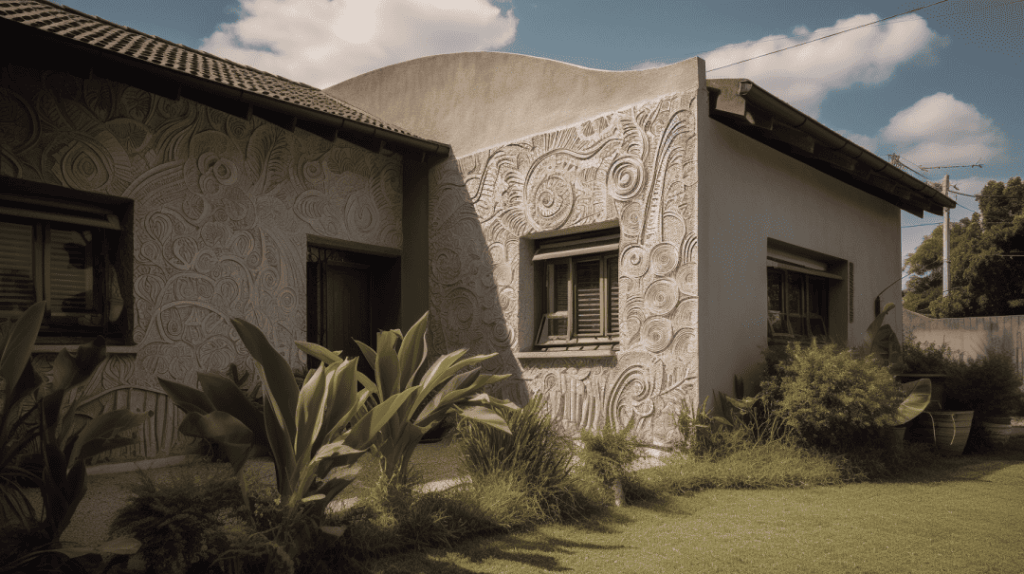
When it comes to enhancing the performance of cement stucco as a cladding, there are several key factors to consider. One essential aspect is the research and development of stucco accessories. These accessories have undergone modification and improvement to effectively divert water and prevent moisture-related issues. By properly managing moisture, we can ensure long-term stucco performance. In this section, I will delve into the significance of stucco accessories, their modifications, and the numerous benefits that proper moisture management brings to the longevity of stucco cladding.
Research and development of stucco accessories
Stucco accessories have undergone extensive research and development to enhance their performance as cladding. The focus has been on developing modified and improved accessories that effectively divert water. These advancements in stucco accessories have resulted in long-term benefits for the overall performance of stucco systems. Proper moisture management techniques, such as the installation of drainage points and flashing, are crucial in preventing water infiltration and ensuring the longevity of stucco systems. Through ongoing research and development, the industry continues to innovate and improve stucco accessories for better moisture management and overall system performance.
Getting wet may be fun for kids, but it’s not so great for stucco – luckily, modified and improved stucco accessories are here to keep water diversion on point!
Modified and improved stucco accessories for effective water diversion
Modified and improved stucco accessories, designed to effectively divert water, play a crucial role in moisture management for stucco systems. These enhanced accessories help prevent water infiltration and protect the integrity of the cladding. Using techniques such as proper installation of flashing and termination points, along with the use of drainage points in stucco accessories, ensures efficient water diversion. The continuous research and development in this field have resulted in modified stucco accessories that enhance the overall performance and longevity of cement stucco as a cladding. Pro Tip: Ensure the proper selection and installation of these modified accessories for optimal water management in stucco systems.
Benefits of proper moisture management for long-term stucco performance
Proper moisture management is vital for ensuring the long-term performance of stucco systems. By effectively managing moisture, several benefits can be achieved, contributing to the overall durability and effectiveness of the stucco cladding.
- Increased resistance to water infiltration: Proper moisture management techniques help prevent water from penetrating into the stucco system, reducing the risk of damage and deterioration.
- Enhanced durability: By effectively managing moisture, the stucco system can maintain its structural integrity over time, resisting potential issues such as cracking or warping due to excessive moisture exposure.
- Improved energy efficiency: By preventing moisture infiltration, proper moisture management can contribute to improved energy efficiency in buildings. Moisture intrusion can negatively impact insulation performance and increase heating and cooling demands.
- Reduced maintenance costs: With proper moisture management, stucco systems require less frequent maintenance and repairs. This can result in cost savings over the long term.
- Prolonged lifespan: When moisture is effectively managed, the lifespan of the stucco system can be extended. This reduces the need for premature replacement or extensive renovation work.
- Enhanced aesthetic appeal: Proper moisture management helps preserve the appearance of the stucco cladding by preventing issues like discoloration or efflorescence caused by excessive moisture.
It is important to note that these benefits are not solely dependent on individual components but rather on an integrated approach that encompasses design considerations, proper installation techniques, and regular maintenance.
One example illustrating the impact of effective moisture management involves a commercial building with a poorly designed stucco system. Due to inadequate drainage points and improper flashing installation, water infiltrated behind the stucco cladding over time. As a result, significant damage occurred within the walls, requiring extensive repairs and costly renovations. By implementing proper moisture management techniques from the beginning, such issues could have been prevented, saving both time and money.
Some Facts About Proper Moisture Management Techniques for EIFS Stucco Maintenance:
- ✅ Incidental moisture can find its way past the cement stucco membrane on framed walls with proper design, detailing, and installation. (Source: Team Research)
- ✅ Excessive water can infiltrate stucco walls through larger cracks, penetrations, and separations at accessories, leading to problems. (Source: Team Research)
- ✅ Water that enters through openings will generally be absorbed by the cement or run down on the face of the water-resistant barrier and exit at the building base within the stucco foundation screed. (Source: Team Research)
- ✅ Excessive water entering the stucco system can compromise the integrity of the water-resistant barrier and lead to interior water infiltration. (Source: Team Research)
- ✅ Continuing research and development of stucco accessories are improving water management within the stucco wall assembly. (Source: Team Research)
FAQs about Proper Moisture Management Techniques For EIFS Stucco Maintenance
How does moisture enter the stucco walls on framed walls?
Moisture can find its way past the cement stucco membrane on framed walls through larger cracks, penetrations, and separations at accessories.
What problems can excessive water infiltrating stucco walls cause?
Excessive water infiltration through cracks, trim accessories, and building penetrations can create a hydrostatic head, compromising the integrity of the water-resistant barrier (WRB) and leading to interior water infiltration.
How can water be diverted out of the stucco wall before it reaches the building base?
Through modifications of current stucco accessories and the implementation of improved ones, water can be redirected out of the stucco wall, alleviating concerns and making cement stucco a high-performance cladding.
What challenges does the transition to energy-efficient buildings pose for stucco systems?
The transition to energy-efficient buildings with less airflow through the structure creates “tighter” buildings and less opportunity for infiltrating moisture to evaporate from the exterior claddings, thus exacerbating the conditions for mold growth.
How does moisture management differ in EIFS stucco systems compared to traditional stucco systems?
In EIFS systems, the water-resistant barrier (WRB) is on the outer layer, known as lamina, while in traditional stucco systems, the WRB is behind the stucco. The cement stucco membrane in traditional systems allows small amounts of water to diffuse, while large cracks in the membrane can allow water to enter the stucco cavity. Drainage out of the stucco system is crucial in both types to prevent moisture-related issues.
What considerations should be made when using foam (EPS) plant-on shapes and acrylic/elastomeric finish coats with stucco systems?
Foam (EPS) plant-on shapes can reduce the ability for stucco to dry out behind them if water is allowed behind the shape without a weep point. Acrylic finish coats should be vapor permeable to allow moisture to escape. Elastomeric finish coats provide extreme water resistance but can retard the drying of the wall assembly to the exterior.

